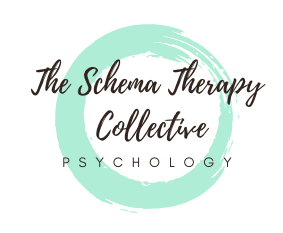Do you have someone in your life who seems perpetually stuck, complains a lot, and blames others for their situation? Perhaps this person states that they are powerless to change and that things can’t get better for them because of their circumstance.
They may also reject any suggestions that could help shift them out of helplessness and move them towards change. You may find they get angry at your suggestions and tell you that if you cared you wouldn’t even say these things.
The Helpless Surrender mode
If so, you have met someone who has a Helpless Surrender mode.
While we all can feel stuck and complain sometimes, for some people this is a more constant way of being in the world
As a supervisor and EMDR consultant, I work with a lot of therapists to review their current practice. Clients who don’t progress despite a therapist’s best efforts are often brought to me.
Common ways the Helpless Surrender Mode shows up in therapy
Clients who ask for strategies and then immediately reject any suggested strategies.
Clients who say that nothing works for them.
Clients who repeatedly complain about the same topics without any change or developing agency on their part.
Clients who therapists have been seeing for years with little progress.
Clients who have seen other therapists for years before seeing the therapist who is consulting with me.
Clients who cry a lot in session and the therapist reports feeling bad because they struggle to feel empathy in the way that they usually would when a client is distressed. Instead, they feel frustrated.
Clients whom therapists regularly want to refer out because they don’t like feeling like a useless therapist when they are with these clients.
This is the Helpless Surrender Mode in action in the therapy room.
Explains why some people struggle to improve despite years of therapy
Identified by Dr Susan Simpson, schema therapy expert in Eating Disorders, this mode explains why some people struggle to improve both in therapy and in life.
The Helpless Surrender mode is usually developed as a way for people to elicit care. It can have the power to keep a family together through a focus on the child’s illness, such as an eating disorder. It can help families maintain their current structure, instead of becoming healthier, by having a problematic person to blame.
Sometimes it forms because when the person was a child, the only experience of feeling seen occurred when they were sick and needed hospitalization.
People who have this mode are often terrified that they will not get their needs met if they are not sick, stuck, and seemingly helpless.
Unfortunately, some people maintain this mode so completely and almost permanently that they struggle to make friends because people eventually tire of the “poor me” and endless complaints that never resolve.
The roles that the Helpless Surrender Mode can pull us into
When people use this mode a lot it tends to pull people around them into various roles. These roles are well described by the Karpman Drama Triangle. The helplessness of the person in the role of victim, tends to evoke a rescuing response from many people (the rescuer role in the drama triangle). In some people, this mode evokes a rejecting, critical or punishing response (the persecutor role in the drama triangle).
Therapists often find they begin the relationship in Rescuer role. They then shift into Persecutor role over time as they become frustrated with the Helpless Surrender mode’s complaints, lack of agency, and unwillingness to take responsibility for changing their situation.
A common pattern that occurs is that a therapist mistakes the Helpless Surrender Mode for a wounded child mode and spends a lot of time soothing, validating, and empathizing with the client’s concerns. Only to find, that unlike a wounded child mode, there is little to no response or change as a result of their efforts and care.
It’s important to remember that this side of the client isn’t the whole person. The Helpless Surrender Mode is a side of the person that they use in an attempt to get their needs met. Even though it is clear from the outside that this way of operating in life won’t truly get anyone’s emotional needs met. If anything it repels people and blocks developing an authentic and autonomous self.
You are not hurting someone if you change your approach
A lot of people struggle with the idea that they may be hurting people who have the Helpless Surrender mode if they move out of an empathy and validation frame. As I attempted to write this article, I noticed a concern that people with Helpless Surrender Mode who read this post could feel attacked. These kinds of reactions are an almost guaranteed sign that you are dealing with someone with a Helpless Surrender Mode.
It is important to understand the benefits of moving out of the Rescuer role and taking a different approach when you have a client or someone in your life who has this mode. The approach generally suggested is to curiously draw attention to the appearance of the mode in session and explore its origins. It is also useful to highlight the Helpless Surrender mode’s impact on the client and the pros and cons of maintaining the dominance of the mode. The goal is to gently and without judgment, move people towards developing other sides of themselves, such as the Healthy Adult mode, so they can truly get their needs met.
It is never a good idea to reinforce helplessness
If you worry about upsetting the client or person in your life with this mode, it’s important that in limited reparenting, we also offer coaching, guidance, encouragement to do hard things, and set limits. Sometimes too much empathy and validation results in colluding with the person’s helplessness.
It is never a good idea to reinforce helplessness. All humans do better when they believe change is possible and that they have some power to create it.
Simpson, S. (2022). Schema Therapy for Helpless Surrender Mode webinar.
Edwards, D. (2015). Self-pity / Victim: A Surrenderer Schema Mode. ISST Bulletin


